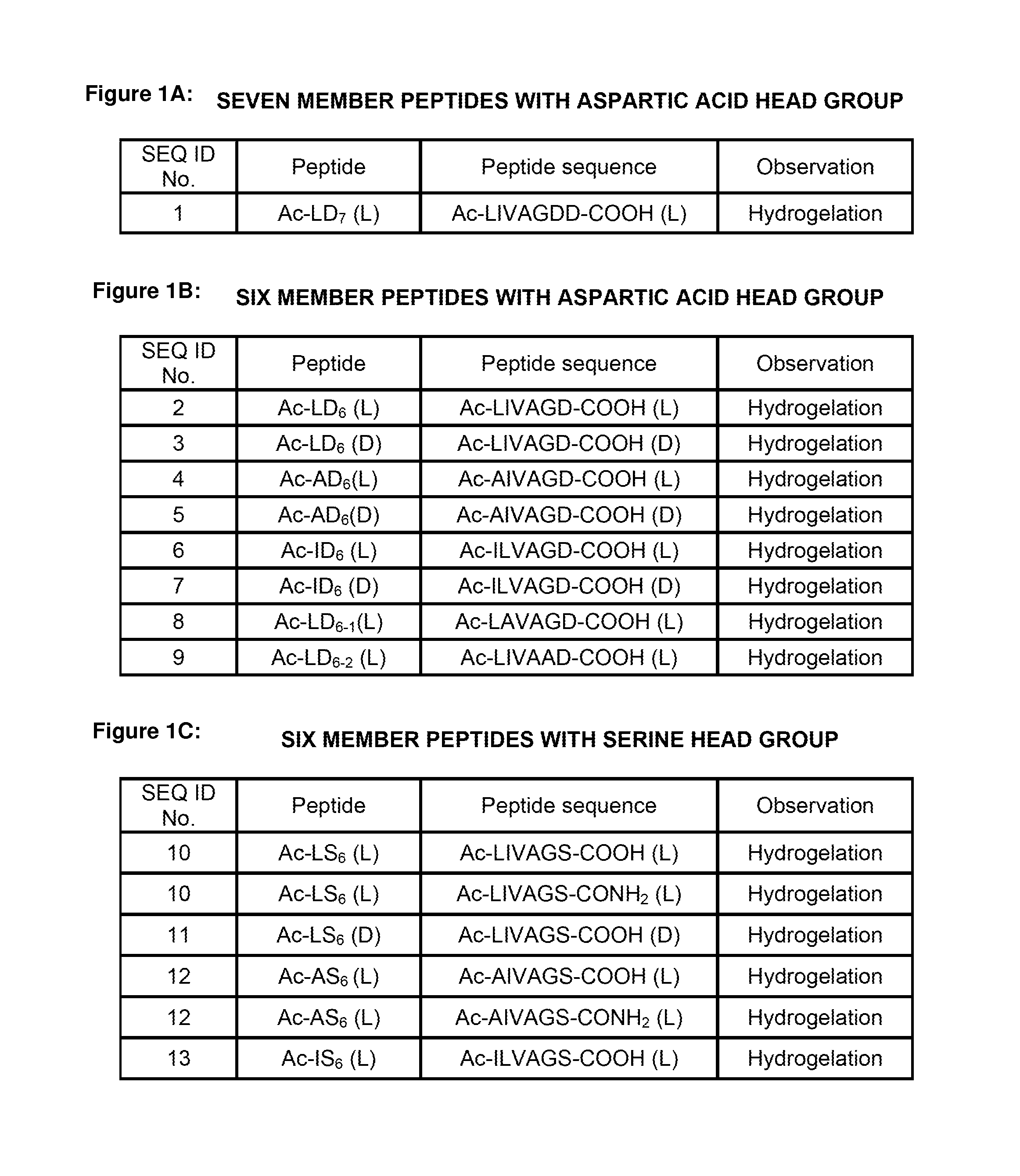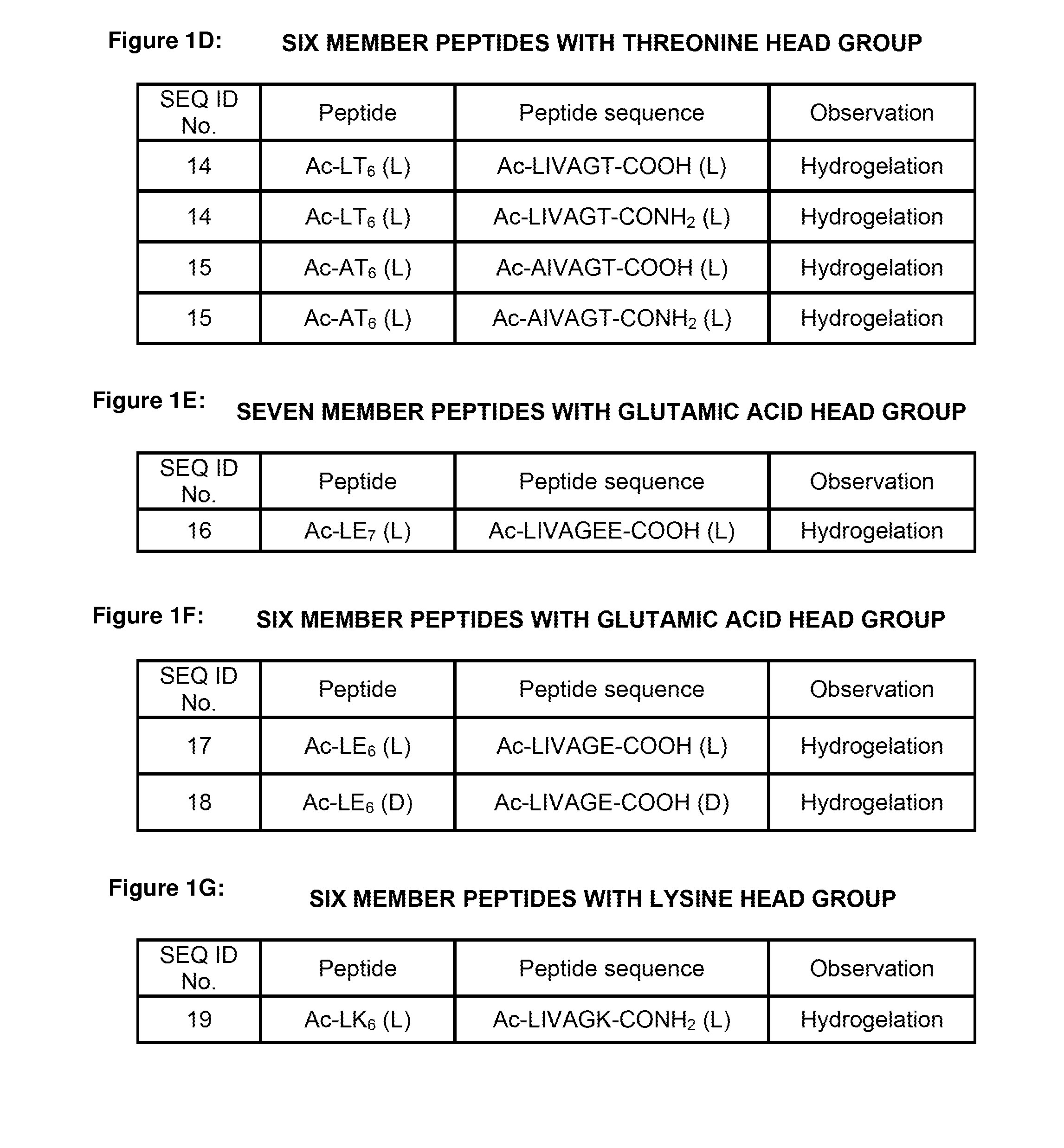Building stratified biomimetic tissues and organs using crosslinked ultrashort peptide hydrogel membranes
a technology of hydrogel membrane and stratified tissue, which is applied in the field of hydrogel membrane, can solve the problems of high production cost and insufficient biomaterials to mimic the biological, and achieve the effect of reducing the amount of amphiphilic peptides and facilitating the conjugation of bioactive agents
- Summary
- Abstract
- Description
- Claims
- Application Information
AI Technical Summary
Benefits of technology
Problems solved by technology
Method used
Image
Examples
examples
[0419]Experiments have been performed to illustrate the technical aspects of exemplary embodiments of the present invention. The following examples are described in the Experimental Methods and Results. The skilled artisan will readily recognize that the examples are intended to be illustrative and are not intended to limit the scope of the present invention.
[0420]Experimental Methods and Results
[0421]Peptides
[0422]The peptide sequences were designed to represent an amphiphilic peptide structure containing a hydrophilic head group and a hydrophobic tail. The rationale for the peptides design was to create a peptide monomer of decreasing size resembling a cone shaped structure. The hydrophobic tail differs by using different aliphatic amino acids. It is consisting of the following aliphatic amino acids such as glycine, alanine, valine, leucine and isoleucine and the hydrophilic head group is consisting of one or two polar or charged amino acids. The sequence order of the hydrophobic ...
PUM
| Property | Measurement | Unit |
|---|---|---|
| Fraction | aaaaa | aaaaa |
| Fraction | aaaaa | aaaaa |
| Fraction | aaaaa | aaaaa |
Abstract
Description
Claims
Application Information
 Login to View More
Login to View More - R&D
- Intellectual Property
- Life Sciences
- Materials
- Tech Scout
- Unparalleled Data Quality
- Higher Quality Content
- 60% Fewer Hallucinations
Browse by: Latest US Patents, China's latest patents, Technical Efficacy Thesaurus, Application Domain, Technology Topic, Popular Technical Reports.
© 2025 PatSnap. All rights reserved.Legal|Privacy policy|Modern Slavery Act Transparency Statement|Sitemap|About US| Contact US: help@patsnap.com



